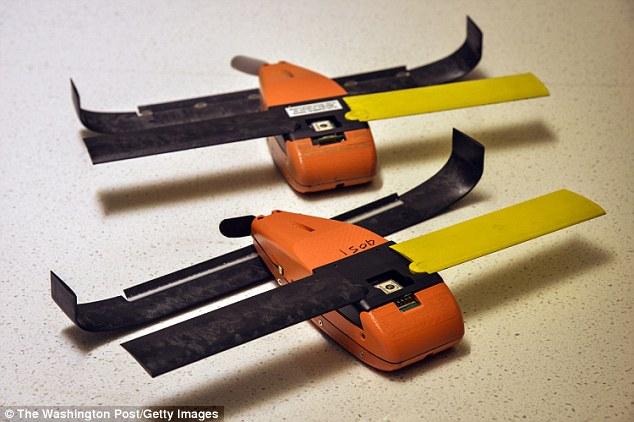Although most of their innovative creations and plans are usually kept undisclosed, the military complex and defense industry have noticeably benefited from the rise of 3D printing technology. In the United States, the various branches of military have looked at additive manufacturing as a solution for a number of applications, from developing weaponry to customizing their meals. In fact, the military will likely be on the forefront of future innovations with 3D printing, helping the technology become more versatile and capable than ever before.
One prime example of this comes from the Pentagon, which has recently revealed that they’ve been testing out swarms of low-cost surveillance and attack mini-drones. According to the Department of Defense, they plan to deploy in the future to jam enemy defense systems, blanket areas with small sensors, or even function as attack weapons. These mini-drones, which have been dubbed as Perdix, have a 3D printed outer-mold, which enabled more rapid production at a lower cost.
These Perdix mini-drones have already been tested by the Pentagon’s elusive Strategic Capabilities Office (SCO), and were recently launched from F-16 and F-18 fighter jets. William Roper, the Director of the SCO, declined to openly discuss the particular sensor technologies used by the mini-drones, but he did confirm that they are capable of being launched from the flare dispensers of these military aircrafts. According to the SCO, these swarms have proven to be potentially advantageous for near-term combat purposes, and were designed to bode well with enemy weapons and extreme temperatures.
“They are expendable and fly low as a surveillance asset. You can have a lot of them for a saturation approach. Saturating has an advantage over the thing it has to defend against. Its defender has to take more time and money to defend against it,” said Roper.
To prevent these swarming mini-drones from crashing into one another, the military services that developed the technology utilized computer algorithms for autonomous flight. This also enables the Perdix to perform a wide-range of strategically relevant missions, particularly relating to surveillance. By having them attack in saturated swarms, the defender is forced to spend more time and resources trying to protect from the mini-drones.
This drone technology were developed with the assistance of the SCO, which itself was created to help the military circumvent the lengthy and bureaucratic formal acquisition process. Their ultimate goal, according to Roper, is to help solidify these types of technologies into a definite advantage for the military. Currently, test results and data for further development of the Perdix are being analyzed, which will lead to design modifications if necessary. All in all, the mini-drone swarms are yet another example of how 3D printing technology has become an integral part to military prototyping and manufacturing, offering a faster and more affordable technology in an industry where every second usually counts. Discuss in the Mini Drone Swarms forum at 3DPB.com.
[Source: Scout]Subscribe to Our Email Newsletter
Stay up-to-date on all the latest news from the 3D printing industry and receive information and offers from third party vendors.
You May Also Like
3D Printing Financials: Fathom Struggles in Financial Quicksand During Critical Transition
Facing a year of key transitions and financial pressures, Fathom (Nasdaq: FTHM) has filed its annual report for 2023 with the U.S. Securities and Exchange Commission (SEC). The document outlines...
Latest Earnings Overview for Australian 3D Printing Firms Titomic and AML3D
Australian 3D printing manufacturing firms Titomic (ASX: TTT) and AML3D (ASX: AL3) reported their financial results for the period from July to December 2023, marking the first half of their...
3D Printing Webinar and Event Roundup: April 7, 2024
Webinars and events in the 3D printing industry are picking back up this week! Sea-Air-Space is coming to Maryland, and SAE International is sponsoring a 3D Systems webinar about 3D...
3D Printing Financials: Unpacking Farsoon and BLT’s 2023 Performance
In the Chinese 3D printing industry, two companies, Farsoon (SHA: 688433) and Bright Laser Technologies, or BLT (SHA: 688333), have recently unveiled their full-year earnings for 2023. Farsoon reported increases...


































